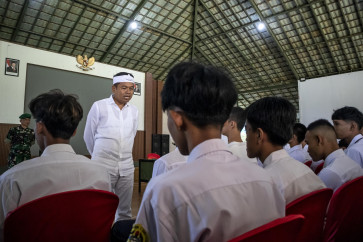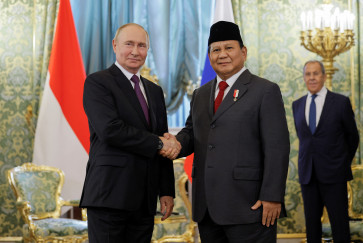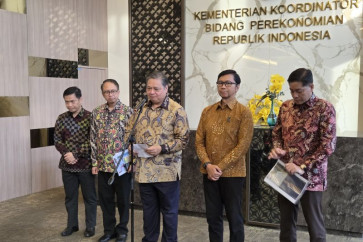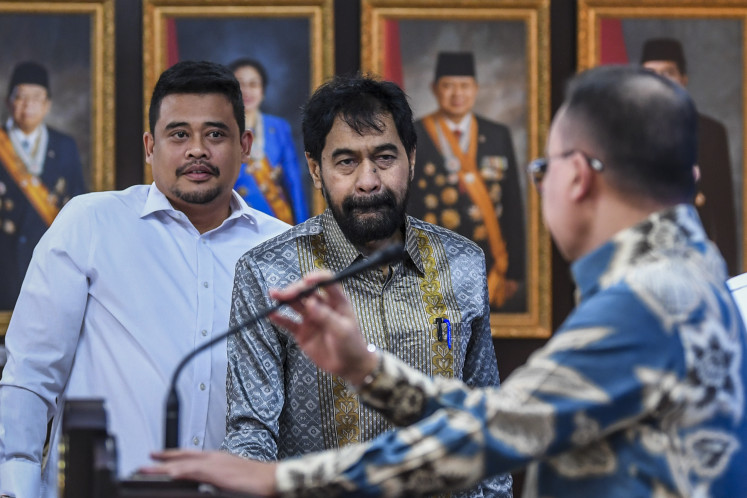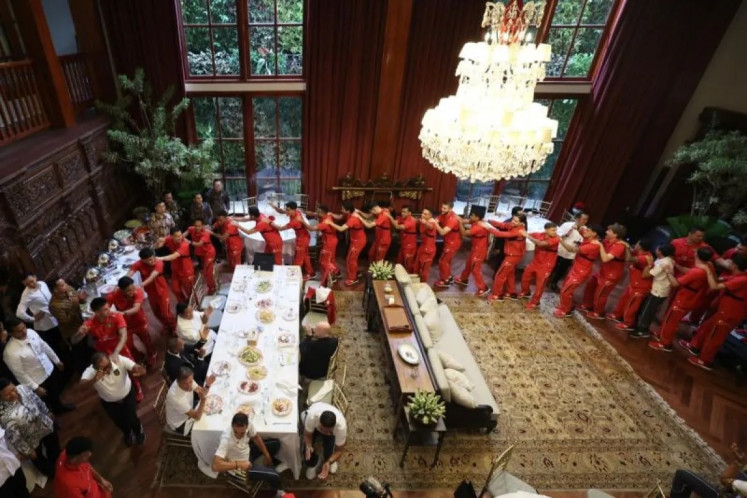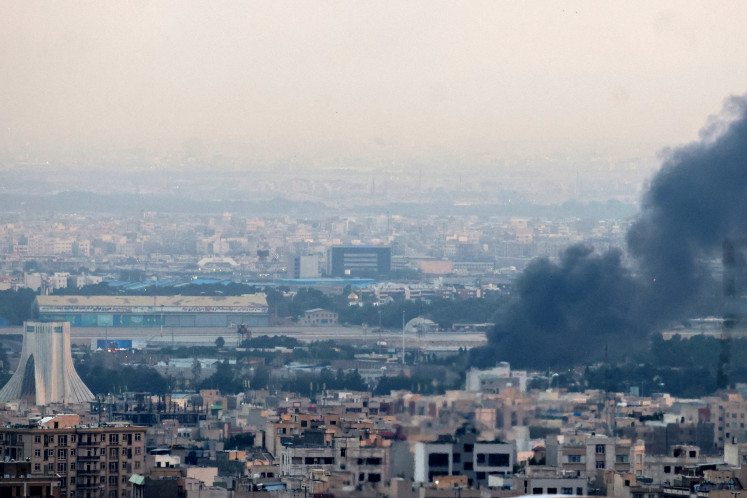Popular Reads
Top Results
Can't find what you're looking for?
View all search resultsPopular Reads
Top Results
Can't find what you're looking for?
View all search resultsPoor ties worsen tensions despite peace accord
The Balinese transmigrants in Balinuraga and Sidoreno villages and the local residents of Agom village in South Lampung regency had forged a peace pact late on Sunday after a deadly communal conflict in late October
Change text size
Gift Premium Articles
to Anyone

T
he Balinese transmigrants in Balinuraga and Sidoreno villages and the local residents of Agom village in South Lampung regency had forged a peace pact late on Sunday after a deadly communal conflict in late October.
But the clash may not be the last, according to leading figures from both communities.
Pangikhan Naga Bringsang, a respected local Lampung leader, said that the recent conflict between the villages might evolve into a wider clash.
“We as natives of Lampung won’t stand still and let our brothers fight a battle alone,” Pangikhan said during a meeting with other respected local figures at Kelau village in Penengahan district on Saturday.
Lampung residents from other villages were also involved in the clash due to a local teaching called piil, a philosophy that places great emphasis on ethnic pride and self-esteem, according to Pangikhan.
Cultural observer Isbedy Setiawan Z.S. described piil as an ethos of “no retreat”, where native Lampung residents would refuse to allow any perceived slight to their dignity.
Agom village chief Muchsin Syukur agreed with Pangikhan, saying that the mob that attacked the Balinese had included residents from other villages outside Agom.
“The attack did not only involve residents from Agom, but also those from surrounding villages who were bonded by a similar birthright,” Muchsin said. “They were also fed up with the Balinese.”
Balinese community leader Made Kindri, meanwhile, said that the potential for future conflict would always be present. “This is because such conflict has not been the first,” Kindri, said, referring to the clash between the Balinese in Napal village in Sidomulyo district and the Lampung communities of Kota Dalam village in January.
That clash was triggered by a dispute over the ownership of a parking lot. Sixty-three homes were torched.
Budi Sunantra, a resident of Napal whose house was destroyed in the clash, said that he had been surprised by the attack, because he felt that the Balinese community had no issues with the other local ethnic groups.
Budi, however, said that there had been a lack of communication between the Balinese in Napal and the local residents in of other villages.
“I admit that there’s a lack of silaturahmi [communal bonds] between us and them, including between our respective leading figures,” Budi said.
“That’s because it’ll be expensive to hold regular gatherings to strengthen the bonds between the Balinese and the natives.”
He also attributed to the lack of communication to the tendency of the Balinese to stay in close-knit neighborhoods. “The Balinese usually stay in one village such as Napal and Balinuraga,” Budi said. “The local residents, on the other hand, like to stay near the shore.”
According to Budi, the Balinese in South Lampung formed their own neighborhoods after they were moved to the regency under a government transmigration program in the 1960s.
“They initially put us in one place along with other migrants from Java,” he said. “But then the Balinese started to buy land from the Javanese. Therefore, villages like Napal and Balinuraga became like they are now: Balinese villages.”
There are at least four prominent Balinese villages in South Lampung: Napal, Balinuraga, Sidoreno and Sidomakmur.
Ismail, a 40-year-old resident of Agom, echoed Budi’s words on poor communication, saying that he had no clue about the Balinese in Balinuraga.
“I know nothing about them,” Ismail said. “Sure, they often come to Agom to buy young coconut leaves, but I never speak to them and they never speak back. I never visit Balinuraga either because it’s too far.”
The peace pact
• Both sides have agreed to maintain peace, order, harmony and kinship among ethnic groups in South Lampung.
• Both sides have agreed to not repeat any violent acts on behalf of tribal affiliations, religion, race and societal groups.
• Any conflicts triggered by personal or community issues are to be directly handled and mediated by elders, community leaders and respected figures.
• If mediation fails, the conflicts will be solved through the system of musyawarah (deliberation) and mufakat (consensus) by respected figures and local authorities.
• If it still fails, the conflicts will be handed over to the authorities to be processed according to the law.
• Both sides have agreed to give counseling to residents who do things that may trigger clashes. The perpetrators of such actions may be expelled from South Lampung if the action has severe consequences.
• The expulsions also apply to residents of native Lampung and other ethnic groups in South Lampung.
• Both sides have agreed to not file any suits regarding the clash between residents of Balinuraga and Agom village. The police will also stop all investigations into the case.
• The Balinese, especially those living in Balinuraga, have to be able to socialize and live side by side with all ethnic groups in South Lampung, especially those living in neighboring villages.
• Both sides are obliged to inform the content of the peace deal to respective communities.

